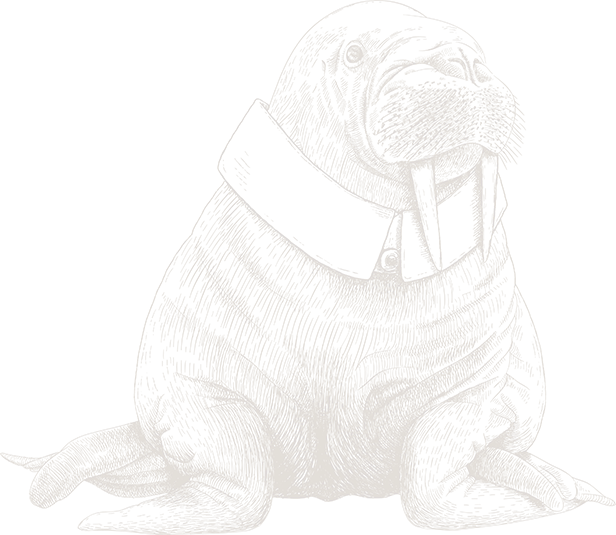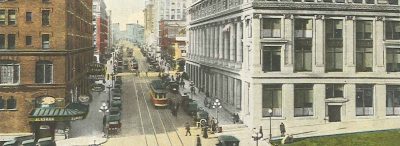The Origins of the Arctic Club
Experience the adventure of history at the Northeast corner of Third Avenue and Cherry Street.
Prior to its establishment as the hotel that you see today, the Arctic Club was formed in 1907 by successful veterans of the Klondike Gold Rush. As the story goes, the building is associated with one of the most overlooked facets to come out of the 1896 Gold Rush - the formation of a social institution for the many men who returned to Seattle after “striking it rich”. Hence, the introduction of this “social club” in Seattle. For many, this provided a space for businessmen with Gold Rush or Alaska connections; and for others, it became a social gathering place in downtown Seattle for men, women and even prominent figures throughout history.

In 1908, the Arctic Club merged with the Alaska Club, a social club for Alaskans in Seattle with common interests; and, thus, kept the Arctic Club name. Opening originally at the corner of Third Avenue and Jefferson, the growth of the club eventually called for expansion. In 1916 one of Seattle's most renowned architects, A. Warren Gould, was commissioned to design a new 8-story building as the new home of the institution on the corner of Third Avenue and Cherry Street.
In designing the building, Gould drew inspiration from its origins using fine Alaskan marble in the main corridors and employed unique detailing such as the famous sculptured walrus heads lining the third-floor exterior. The building was one of the first in Seattle to use off-white terracotta panels over reinforced steel concrete frames as well as colored terracotta in submarine blue and ochre.
Besides the architectural details, the elegant interior of the club originally included a ladies' tearoom, private dining rooms, billiard and card rooms, offices for rent, a bowling alley, a barbershop, private rooms, and a private rooftop garden. The star of the show, however, has always been the formal dining room – today, called the Northern Lights Dome Room, with majestic Rococo gilding and chandeliers, original artistic frescos, ornamental cornices, and a signature, illuminated stained-glass ceiling.
Today, lively, social gatherings take place just beyond the reception area at the Polar Bar. Enjoy curated cocktails, specialty spirits, regionally inspired fare, and great company as you immerse yourself in the culture of the original Arctic Club through the ambiance and details. Play a friendly game at the handsome pool table surrounded by luxurious soft seating and the unique, illuminated polar bear sculpture. The Polar Bar is a well-known destination for visitors and locals alike with endless opportunities to mix and mingle in the Emerald City.

Alaska and The Klondike Gold Rush
When the SS Portland ship set sail southbound from Alaska and the Yukon and arrived at the port of Seattle, 5,000 people – 10% of Seattle's population at the time – flocked to the dock with intrigue and captivation; likely, unaware of the massive wealth that would eventually bring modern Seattle to life as we now know it. The Seattle Post-Intelligencer chartered a tugboat to meet the steamer from Alaska; and a reporter who boarded it published the famous headliner, “Gold! Gold! Gold! Gold!”, giving Seattle a place on the map. Seattle's association with the gold rush quickly caught on and the local Chamber of Commerce promoted Seattle as the “gateway to Alaska.”

Today, the intricacies and details of the Arctic Club Hotel allow history to live on, helping us celebrate all that the club stands for and acting as a reminder of the value this history holds in our beautiful Emerald City and beyond. The property can be found on the National Register of Historic Places and has become a historical landmark in the city of Seattle.
An Emblem of History
As you approach the main doors of the hotel lobby today, you will notice the original emblem of the Arctic Club beneath your feet, called Duo Juncti in Uno. This emblem was designed to express a feeling of friendly unity and achievement with two interlaced circles signifying the joining of two persons or bodies of men. The patriarchal cross represents trials or hardships, and the red bar at the top represents those difficulties conquered. The horizonal bar that joins the circles and cross represents unity. Sociability and pleasure are represented by the lower red bar. Throughout the hotel, you will notice this symbol weaved into the details of the interior design, bringing appreciation to the meaning of this historical emblem.

Edward S. Curtis Photography
Explore our common spaces or unwind in your room while admiring the indigenous portrait photography displayed on the walls throughout the hotel. Dawson City, in the Yukon territory of Canada, was at the heart of the world-famous Klondike Rush, and many made their way north from Seattle. While some had hopes of acquiring wealth in gold, others were motivated by personal interest.

Edward Curtis lived in Seattle when the Gold Rush began; and as a budding photographer of Seattle's elite, he embarked upon the journey to the Yukon goldfields in order to capture the rush through his lens. Curtis claimed his photos captured the mad rush “more clearly and truthfully than any mere pen picture,” depicting the Indigenous peoples of Alaska and the Yukon territories.
Interestingly, Edward's brother Asahel was also introduced to photography in his teens, giving these brothers common interest in this shared fascination and skill. Like his brother, Asahel also documented the Gold Rush; thus, giving importance to the Curtis name in relationship to the Arctic Club Hotel. The Curtis brothers shared an interest of photographing Native American tribes and their way of life even before the rush – thus, these brothers became the perfect candidates for providing a most intimate documentation of these historical events.
Your arrival today is greeted by many photographs of the original founding members displayed on the walls of the reception area along with a photo of Edward Curtis on the main column to your right; all of which are signed by the respective member and the photographer, Edward Curtis.
The Top Hat and Collar Collection
In a glass-protected display at the front desk, a collection of vintage hats and collars brings you back to the post gold rush era, an era of significance and social status. While this hat collection from 1910-1930 is a later addition to the hotel's interior, it serves as a nod to the origins of the Arctic Club Hotel and its founders. Prestige collides with impeccable fashion taste; thus, a hat and collar collection is born as a nod to the club that once hosted a most affluent circle.

Sophie Tucker – Sweetheart of the Arctic Club
Sophie Tucker, born in 1886 and known as the “First Lady of Show Business”, was an American singer, comedian, actress and radio personality famous for her delivery of comical and risqué songs and one of the most popular entertainers in the U.S. during the first half of the 20th century. Sophie performed on several different occasions at the Arctic Club and became known as the “Sweetheart of the Arctic Club”. In celebration of the 50th anniversary, artist Eustace Ziegler created a painting of a typical Alaskan scene, describing it: “This is the arctic Club – two men and a friendly glass. For fifty years of friendship, this is how I feel about the Arctic Club”. In 1958, Sophie Tucker played the club's Alaska Night annual dinner.



